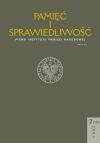Żydzi na Warmii i Mazurach po II wojnie światowej. Zarys problematyki
Jews at Warmia and Mazury after WW2 (outline of the topic)
Author(s): Renata Gieszczyńska, Witold GieszczyńskiSubject(s): History
Published by: Instytut Pamięci Narodowej
Summary/Abstract: On January 21st 1946 a District Jewish Committee was established in Olsztyn. At the moment of creation of the Jewish Committee there were 57 Jews registered in Olsztyn, and according to data of 30th April 1947, the Jewish society at Warmia and Mazury numbered as many as 288 people. In the first years after the war financial situation of Jewish community was usually quite difficult. It is estimated that in Olsztyn voivodship there were only about 5% well-off Jews, and 2/3 of them required constant financial help and other aid. Among the Jews who settled down at Warmia and Mazury there were predominately young people, in so called production age (that is between 21 and 45 years of age). However, the situation of Jews in after-war Poland was shadowed by dramatic events in Kielce on 4th July 1946. Olsztyn Jews responded to Kielce pogrom by organising a protest demonstration on 9th July 1946, when a resolution condemning this crime was taken. Apart from the Jewish committee in Olsztyn there was also a Jewish religion congregation, which aimed at allowing Jews for free religious practices. In the end of forties, as many Jews migrated abroad, mainly to Palestine, their number at Warmia and Mazury also decreased. It was mainly the result of alienation of Jews in Poland. The stalinisation of the country led to closing down most of the Jewish organisations in Poland. Most of Jews who had lived at Warmia and Mazury left Poland with further emigration waves. The Jewish community left was sparse and does not make a separate group nowadays, its members has been widely assimilated.
Journal: Pamięć i Sprawiedliwość.
- Issue Year: 10/2006
- Issue No: 2
- Page Range: 231-243
- Page Count: 13
- Language: Polish

